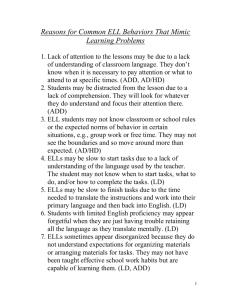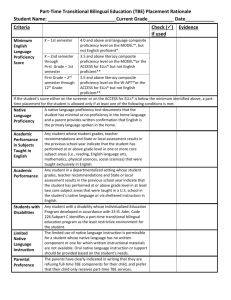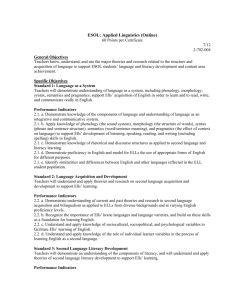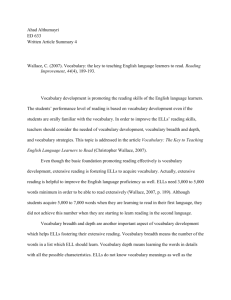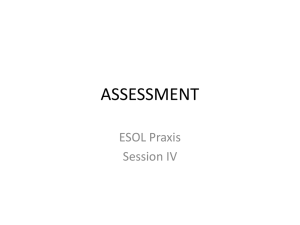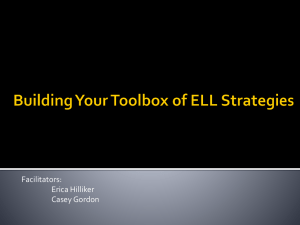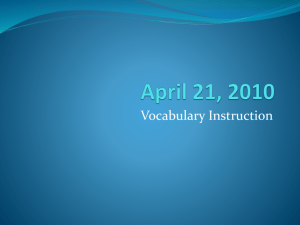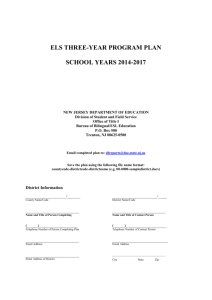Literacy Development in Second Language
advertisement
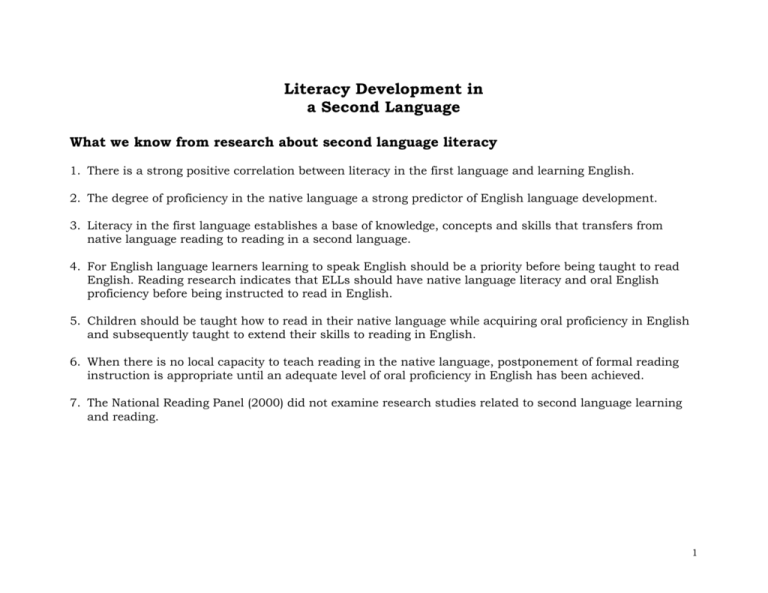
Literacy Development in a Second Language What we know from research about second language literacy 1. There is a strong positive correlation between literacy in the first language and learning English. 2. The degree of proficiency in the native language a strong predictor of English language development. 3. Literacy in the first language establishes a base of knowledge, concepts and skills that transfers from native language reading to reading in a second language. 4. For English language learners learning to speak English should be a priority before being taught to read English. Reading research indicates that ELLs should have native language literacy and oral English proficiency before being instructed to read in English. 5. Children should be taught how to read in their native language while acquiring oral proficiency in English and subsequently taught to extend their skills to reading in English. 6. When there is no local capacity to teach reading in the native language, postponement of formal reading instruction is appropriate until an adequate level of oral proficiency in English has been achieved. 7. The National Reading Panel (2000) did not examine research studies related to second language learning and reading. 1 National Reading Panel Components Instructional Considerations for ELLs phonemic awareness phonics vocabulary development It is necessary for ELLS to have knowledge of the English vocabulary words within which they are to understand phonemes. Teachers can enable phonemic awareness in English for ELLs by understanding the linguistic characteristics of students’ native language, including phonemes that exist and do not exist in the native language. Parents can share culturally relevant and teachable rhymes from first language. Students who are not literate in their own language or whose language does not have a written form may not understand some concepts and need to be taught about the functions of print. Students may have learned to read and write in a native language in which the letters correspond to different sounds than they do in English, or they may have learned to read and write in a language with characters that correspond to words or portions of words. English vowel sounds and their numerous spellings present a challenge to Spanish literate students learning to read English. (Spanish is the native language of 77% of ELLs in US schools.) Effectively teaching phonics requires knowledge of the students’ native language(s). Vocabulary needs to be taught explicitly and be a part of the daily curriculum in addition to learning to read. Children learn the majority of their vocabulary indirectly in 3 ways: - through conversations, mostly with adults - listening to adults read to them - reading extensively on their own. Teachers need to know how students learn vocabulary directly including: how to explicitly teach words before students read a text, how to use dictionaries, how to use prefixes and suffixes to decipher word meanings, and how to use context clues. Having the vocabulary to hold a social conversation does not indicate sufficient academic vocabulary to comprehend a science or social studies text. 2 National Reading Panel Components Instructional Considerations for ELLs Reading fluency (oral reading skills) reading comprehension strategies Students need to see and hear literally hundreds of books per year in order for fluency to be modeled for them. ELLs should participate in read-alouds of big books, read along with proficient readers, and listen repeatedly to books read aloud to gain fluency in English. Oral proficiency provides a foundation to support learning about the alphabetic principle and subsequent reading fluency. Fluency should not be confused with accent. Learning to read for meaning depends on understanding the language and referents of the text to be read. Teachers should scan text beforehand to anticipate difficult figurative language and discuss with students about literal and figurative meanings of expressions. Teachers of ELLs must expose their students to quality literature and higher order thinking skills through the use of graphic organizers, modeling “thinking aloud,” and stopping often to question and summarize the text. 3


